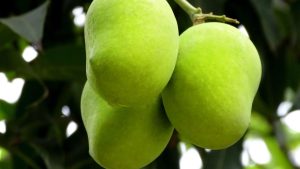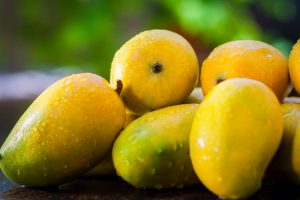
“Ripe for Success: The Booming Market for Mango Exports to Australia”
Introduction
Introduction:
Mango is a tropical fruit that is widely consumed and loved by people all over the world. In recent years, there has been a growing demand for mango exports to Australia due to its increasing popularity among consumers. This trend has created new opportunities for mango growers and exporters to expand their businesses and tap into the Australian market. In this article, we will explore the trends and opportunities in the growing demand for mango exports to Australia.
The Benefits of Mango Exports to Australia
Mangoes are one of the most popular fruits in the world, and their demand is growing rapidly in Australia. The country has become a major importer of mangoes, with the majority of the fruit coming from countries such as India, Pakistan, and the Philippines. The growing demand for mango exports to Australia has created a range of opportunities for farmers, exporters, and other stakeholders in the industry.
One of the key benefits of mango exports to Australia is the economic impact it has on the countries that produce the fruit. Mangoes are a major source of income for many farmers in developing countries, and the export market provides them with a valuable source of revenue. This, in turn, helps to support local economies and create jobs in these regions.
In addition to the economic benefits, mango exports to Australia also provide consumers with access to high-quality, fresh fruit. Mangoes are a rich source of vitamins and minerals, and they are known for their sweet, juicy flavor. By importing mangoes from different countries, Australian consumers are able to enjoy a diverse range of flavors and textures.
Another benefit of mango exports to Australia is the potential for innovation and growth in the industry. As demand for mangoes continues to grow, there is an opportunity for farmers and exporters to explore new markets and develop new products. This could include value-added products such as mango juice, dried mango, or mango-based snacks.
The growing demand for mango exports to Australia has also led to increased investment in the industry. This includes investment in infrastructure, such as cold storage facilities and transportation networks, as well as investment in research and development. This investment is helping to improve the quality and consistency of mangoes, which is important for both farmers and consumers.
Despite the many benefits of mango exports to Australia, there are also some challenges that need to be addressed. One of the biggest challenges is ensuring that the fruit is of high quality and meets Australian food safety standards. This requires careful monitoring and testing of the fruit, as well as strict adherence to food safety regulations.
Another challenge is the competition from other fruit and vegetable imports. Mangoes are just one of many fruits that are imported into Australia, and they face competition from other popular fruits such as bananas, apples, and oranges. This means that exporters need to be innovative and find ways to differentiate their products in order to stand out in the market.
Overall, the growing demand for mango exports to Australia presents a range of opportunities for farmers, exporters, and other stakeholders in the industry. By working together to address the challenges and capitalize on the opportunities, the mango industry can continue to grow and thrive in the years to come. With its delicious flavor and nutritional benefits, mangoes are sure to remain a popular fruit in Australia and around the world.
The Growing Demand for Mangoes in Australian Markets
Mangoes are one of the most popular fruits in the world, and their demand is growing rapidly in Australia. The country has a diverse population that loves to try new and exotic fruits, and mangoes are no exception. The tropical fruit is not only delicious but also packed with nutrients, making it a healthy choice for consumers. In this article, we will explore the growing demand for mango exports to Australia, the trends driving this demand, and the opportunities for businesses in the mango industry.
The Growing Demand for Mangoes in Australian Markets
The demand for mangoes in Australia has been steadily increasing over the years. According to the Australian Mango Industry Association, the country produced over 10 million trays of mangoes in the 2020-2021 season, with a retail value of over $180 million. This represents a significant increase from the previous season, where the country produced 8.5 million trays of mangoes.
One of the main drivers of this demand is the changing demographics of the country. Australia has a large population of immigrants from Asia, where mangoes are a staple fruit. As a result, there is a growing demand for mangoes in the country, particularly during the summer months when the fruit is in season.
Another trend driving the demand for mangoes in Australia is the increasing interest in healthy eating. Mangoes are a rich source of vitamins, minerals, and antioxidants, making them a popular choice for health-conscious consumers. Additionally, the fruit is low in calories and high in fiber, making it an ideal snack for those looking to maintain a healthy weight.
Opportunities for Businesses in the Mango Industry
The growing demand for mangoes in Australia presents significant opportunities for businesses in the mango industry. One of the most significant opportunities is in the export market. Australia is a net importer of mangoes, with the majority of the fruit coming from countries such as India, Pakistan, and the Philippines. However, there is a growing demand for high-quality mangoes in the country, particularly from premium retailers and restaurants.
Businesses that can provide high-quality mangoes that meet the strict quality standards of Australian retailers and consumers can tap into this growing market. Additionally, there is an opportunity for businesses to develop new products and value-added products using mangoes. For example, mango puree, dried mangoes, and mango juice are all popular products that can be developed using mangoes.
Another opportunity for businesses in the mango industry is in the domestic market. While the majority of mangoes consumed in Australia are imported, there is a growing interest in locally grown produce. Businesses that can produce high-quality mangoes locally can tap into this market and differentiate themselves from imported products.
Conclusion
The growing demand for mangoes in Australia presents significant opportunities for businesses in the mango industry. The changing demographics of the country, the increasing interest in healthy eating, and the growing demand for high-quality produce are all driving this demand. Businesses that can provide high-quality mangoes that meet the strict quality standards of Australian retailers and consumers can tap into this growing market. Additionally, there is an opportunity for businesses to develop new products and value-added products using mangoes. Overall, the future looks bright for the mango industry in Australia, and businesses that can adapt to these changing trends will be well-positioned for success.
Opportunities for Mango Exporters in Australia
Mangoes are one of the most popular fruits in the world, and their demand is growing rapidly in Australia. The country’s tropical climate and increasing multicultural population have created a significant market for mangoes, making it an attractive destination for mango exporters. In this article, we will explore the trends and opportunities for mango exporters in Australia.
Australia’s Mango Market
Australia’s mango market is growing at an unprecedented rate, with the country’s production increasing by 20% in the last five years. The country’s tropical climate is ideal for growing mangoes, and the fruit is available from September to March. The demand for mangoes in Australia is driven by the country’s multicultural population, which has a strong preference for tropical fruits.
The Australian mango market is dominated by two varieties, Kensington Pride and R2E2. Kensington Pride is the most popular variety, accounting for over 50% of the country’s mango production. R2E2 is a newer variety that is gaining popularity due to its large size and sweet taste.
Opportunities for Mango Exporters
The growing demand for mangoes in Australia presents a significant opportunity for mango exporters. The country’s mango market is worth over $100 million, and there is a shortage of supply during the peak season. Mango exporters can take advantage of this opportunity by supplying high-quality mangoes to the Australian market.
One of the key advantages of exporting mangoes to Australia is the country’s strict food safety regulations. Australia has some of the most stringent food safety standards in the world, which ensures that only high-quality produce is allowed into the country. Mango exporters who can meet these standards will have a competitive advantage in the Australian market.
Another advantage of exporting mangoes to Australia is the country’s proximity to Asia. Australia is a gateway to the Asian market, which is the largest consumer of mangoes in the world. Mango exporters who can establish a foothold in the Australian market can use it as a launching pad to expand into the Asian market.
Challenges for Mango Exporters
Exporting mangoes to Australia is not without its challenges. One of the biggest challenges is the country’s strict quarantine regulations. Australia is free from many pests and diseases that are present in other countries, and the government is committed to maintaining this status. Mango exporters must comply with strict quarantine regulations to ensure that their produce is free from pests and diseases.
Another challenge for mango exporters is the competition from local producers. Australia has a thriving mango industry, and local producers are well-established in the market. Mango exporters must offer high-quality produce at competitive prices to compete with local producers.
Conclusion
The growing demand for mangoes in Australia presents a significant opportunity for mango exporters. The country’s tropical climate and multicultural population have created a significant market for mangoes, and the demand is expected to continue to grow in the coming years. Mango exporters who can meet the country’s strict food safety regulations and offer high-quality produce at competitive prices will have a competitive advantage in the Australian market. While there are challenges to exporting mangoes to Australia, the potential rewards make it a market worth exploring for mango exporters.
Trends in Mango Exportation to Australia
Mangoes are one of the most popular tropical fruits in the world, and their demand is growing rapidly in Australia. The country has become a major importer of mangoes, with the majority of the fruit coming from countries such as India, Pakistan, and the Philippines. In recent years, there has been a significant increase in the demand for mango exports to Australia, and this trend is expected to continue in the coming years.
One of the main reasons for the growing demand for mangoes in Australia is the increasing popularity of the fruit among consumers. Mangoes are known for their sweet and juicy taste, and they are also packed with essential nutrients such as vitamins A and C, potassium, and fiber. As more people become aware of the health benefits of mangoes, the demand for the fruit is likely to continue to rise.
Another factor driving the growth of mango exports to Australia is the increasing availability of the fruit. Mangoes are now grown in many countries around the world, and this has made it easier for Australian importers to source the fruit from a variety of suppliers. In addition, advances in transportation and logistics have made it easier and more cost-effective to transport mangoes from overseas to Australia.
One of the most significant trends in mango exportation to Australia is the increasing demand for high-quality fruit. Australian consumers are becoming more discerning when it comes to the quality of the fruit they buy, and this has led to a growing demand for premium mangoes. These are typically larger, sweeter, and more flavorful than standard mangoes, and they are often sold at a premium price.
To meet this demand, many mango exporters are investing in new technologies and techniques to improve the quality of their fruit. This includes using advanced irrigation systems, implementing strict quality control measures, and investing in research and development to develop new varieties of mangoes that are better suited to the Australian market.
Another trend in mango exportation to Australia is the increasing focus on sustainability and ethical sourcing. Many consumers are now concerned about the environmental and social impact of the products they buy, and this has led to a growing demand for mangoes that are grown and harvested in a sustainable and ethical manner.
To meet this demand, many mango exporters are implementing sustainable farming practices, such as using organic fertilizers and reducing water usage. They are also working closely with local communities to ensure that their workers are treated fairly and that their rights are respected.
Overall, the growing demand for mango exports to Australia presents a significant opportunity for mango exporters around the world. However, to take advantage of this opportunity, exporters will need to focus on producing high-quality fruit that meets the needs and preferences of Australian consumers. They will also need to invest in sustainable and ethical practices to ensure that their products are in line with the values of Australian consumers. With the right approach, mango exporters can tap into the growing demand for this delicious and nutritious fruit and build a successful business in the Australian market.
Challenges and Solutions for Mango Exporters to Australia
Mangoes are one of the most popular fruits in the world, and their demand is growing rapidly in Australia. The country’s tropical climate and diverse population make it an ideal market for mangoes, and exporters are taking advantage of this opportunity. However, exporting mangoes to Australia is not without its challenges. In this article, we will explore the challenges and solutions for mango exporters to Australia.
One of the biggest challenges for mango exporters is meeting the strict phytosanitary requirements of the Australian government. Australia has some of the strictest biosecurity laws in the world, and any fruit or vegetable that enters the country must meet these requirements. This includes mangoes, which must be free from pests and diseases that could harm Australia’s agricultural industry. Mango exporters must ensure that their fruit is inspected and certified by the relevant authorities before it can be exported to Australia.
Another challenge for mango exporters is the competition from other countries. Australia imports mangoes from a number of countries, including Thailand, the Philippines, and India. These countries have established trade relationships with Australia and have a strong presence in the market. Mango exporters from other countries must work hard to establish themselves in the market and differentiate their product from the competition.
To overcome these challenges, mango exporters must focus on quality and differentiation. They must ensure that their mangoes are of the highest quality and meet the strict phytosanitary requirements of the Australian government. They must also differentiate their product from the competition by highlighting its unique qualities and benefits. For example, mangoes from certain regions may have a distinct flavor or texture that sets them apart from other mangoes.
Another solution for mango exporters is to work with local partners in Australia. Local partners can help exporters navigate the complex regulations and requirements of the Australian market. They can also provide valuable insights into consumer preferences and market trends. By working with local partners, mango exporters can establish a strong presence in the market and build long-term relationships with customers.
Finally, mango exporters must be willing to invest in marketing and promotion. Australia is a highly competitive market, and mango exporters must work hard to stand out from the competition. They must invest in marketing and promotion to raise awareness of their product and build a strong brand. This may include advertising, social media, and other forms of promotion.
In conclusion, exporting mangoes to Australia is a growing opportunity for mango exporters around the world. However, it is not without its challenges. Mango exporters must meet the strict phytosanitary requirements of the Australian government, compete with established players in the market, and differentiate their product from the competition. To overcome these challenges, mango exporters must focus on quality and differentiation, work with local partners, and invest in marketing and promotion. By doing so, they can establish a strong presence in the market and build long-term relationships with customers.
Conclusion
Conclusion: The growing demand for mango exports to Australia presents a significant opportunity for mango-producing countries. With increasing consumer interest in healthy and exotic fruits, mangoes have become a popular choice for Australian consumers. As a result, there is a need for mango producers to meet the demand by improving their production and export capabilities. By doing so, they can take advantage of the growing market and increase their revenue. Additionally, the trend towards sustainable and ethical production practices presents an opportunity for mango producers to differentiate themselves and appeal to environmentally conscious consumers. Overall, the growing demand for mango exports to Australia is a positive trend for the industry and presents numerous opportunities for growth and development.




